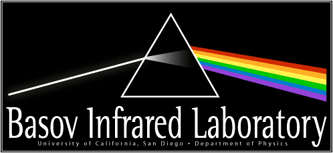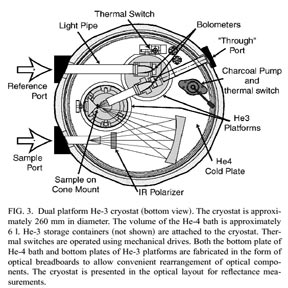| Infrared Spectroscopy of Novel Electronic and Magnetic Materials | |||
|---|---|---|---|
Development of novel spectroscopic instrumentation
Development of novel spectroscopic instrumentation is an essential aspect of the work in my group that enables progress in research topics. Current projects involve development of a broad-band cryogenic ellipsometer (NSF-MRI program) as well as of set-up for ultra-sensitive spectroscopy of N2O for astrobiology applications (in collaboration with M.Thiemens (UCSD)).
Also development of an Apertureless Scanning Near-field Optical Microscope, ASNOM, capable of operating in Ultra High Vacuum and temperatures down to 4K is currently underway. The ASNOM will utilize solid state QC, CO2, CO, and terahertz lasers to probe a variety of interesting transitions in graphene, magnetic semiconductors, superconductors and other materials. The instrument is based around an Attocube AFM shown to the right. It differs from standard AFMs in two significant ways: 1) the tip is completely stationary with all the scanning achieved by piezos under the sample 2) the topography readout is achieved through a fiber based interferometer. A stationary tip is necessary since the near field signal is highly sensitive to optical alignment and the fiber based distance control is compatible with UHV operation. So far we have achieved background-free near field operation at temperatures ranging from 290-360K with a CO2 laser tunable from 9.3 to 10.7um. To suppress the background we employ a pseudoheterodyne interferometric scheme. The idea is to combine a reference field (A) with the backscattered light (B) at the detector (C). At the detector the total field is squared so there will be a crossterm containing the product of the reference field with the nearfield at higher harmonics of the tip oscillation frequency. This allows for background free extraction of the amplitude and phase of the near field signal.
Recent publications: |
|||
t |
|||
 |
|||


